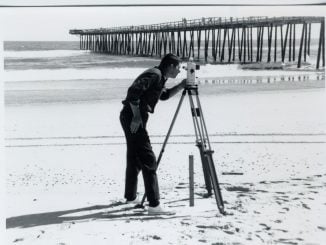
Sept. 17, 1787
Signers in Philadelphia endorse federal Constitution
On Sept. 17, 1787, a majority of delegates to the Constitutional Convention in Philadelphia approved the U.S. Constitution, with North Carolina representatives William Blount, Richard Dobbs Spaight and Hugh Williamson signing on behalf of the state. Despite advocacy for its adoption by Federalists Spaight and Williamson, the North Carolina Convention declined to ratify the Constitution until the Bill of Rights was proposed in 1789. Interestingly, Williamson and Blount were not among the delegates originally selected. When the legislature met the previous January, it selected Gov. Richard Caswell, William R. Davie, Willie Jones, Alexander Martin and Spaight as delegates. Jones, staunchly anti-Federalist, did not accept the appointment, and Caswell was ill and unable to travel. Williamson and Blount were appointed in their stead. Davie and Martin left the convention early, leaving Williamson, Spaight and Blount remaining as signatories. Spaight, from New Bern, later served as governor, and Williamson — sometimes referred to as North Carolina’s Ben Franklin — was a physician, scientist scholar and resident of Chowan County. Blount, a Bertie County native, was later governor of the territory that is now Tennessee, and a U.S. senator from that state as well. A plaque in the rotunda of the State Capitol in Raleigh commemorates the three signers.
Sept. 19, 1985
Elizabeth II, a legacy of America’s 400th
On Sept. 19, 1985, the Elizabeth II made its maiden voyage from Manteo to Ocracoke, Beaufort, New Bern and back again. Constructed as part of America’s 400th anniversary, the 69-foot, square-rigged sailing ship is meant to be representative of the vessels used to bring the first English colonists to Roanoke Island in the late 1500s. It was named for the original Elizabeth, one of the seven ships that was part of Sir Walter Raleigh’s second expedition in 1585. That ship was captained by Thomas Cavendish and most likely carried people and supplies to aid England in building a military garrison near what is now Manteo. Built almost entirely by hand during 1983, the ship was in the water by early 1984 and was christened by British Princess Anne that summer. A private corporation raised $650,000 to finance the ship’s construction, while the General Assembly allocated $1.4 million for the development of other attractions on Roanoke Island. Though the ship sometimes sails along the North Carolina coast, it is moored at Roanoke Island Festival Park — one of 27 state historic sites — for most of the year.
Sept. 20, 1920
Food Lion founder Ralph Ketner born
Grocer, entrepreneur and philanthropist Ralph Ketner, was born in Cabarrus County in 1920. Ketner is known as the longtime television face for the Food Lion grocery store chain. After college in Indiana and service in World War II, Ketner and two partners opened their first store in Salisbury in 1957. Their primary competitors were Winn-Dixie, Colonial and A&P. Investors who joined them to raise capital of $62,000 in time became millionaires. What was then Food Town expanded gradually until 1967 when Ketner took his account books and retreated into a Charlotte motel. Three days later he emerged, with a slogan “Lowest Food Prices in North Carolina” and a formula, selling 10 categories at cost or below and ensuring all products cheaper than competitors. The strategy worked, propelling the chain to expand into Virginia and Tennessee, where the existence of stores with the same name necessitated the change in 1983 to Food Lion. A Belgian company, Delhaize, acquired majority ownership of Food Lion in 1976. Tom Smith succeeded Ketner as president and commercial spokesman in 1981. The company now has 1,100 stores and 48,000 employees in 11 southeastern states. Ketner, who died in 2016 at age 95, funded the business school at Catawba College that bears his name.
Sept. 23, 1946
UNC Charlotte’s Modest Beginnings
In 1946, the Charlotte Center opened to offer evening classes to recent World War II veterans. Established as part of the post-World War II GI Bill, the Charlotte Center got its start in the basement of Central High School. It was the largest of a network of 14 temporary institutions that officials created across the state to help curb the overcrowding that was anticipated at traditional colleges and universities. The state slated the center to close in 1949 as the demand generated by returned soldiers began to dissipate, but local residents led by the Charlotte Center director, Bonnie Cone, fought to keep the center open as a two-year institution called Charlotte College supported exclusively by local funds and operated by the local school board. In 1958, the college was accepted into the North Carolina Community College System. It moved to its current location in 1961 and became a four-year institution in 1964. Charlotte College became the fourth institution to join the consolidated UNC System the following year, changing its name to UNC Charlotte. It continued a steady pace of growth throughout the rest of the 20th century, adding its first graduate degree programs in 1969 and its first doctoral program in 1993. Today, UNC Charlotte is the fourth-largest institution in the UNC system with an enrollment of more than 26,000.
Sept. 23, 1740
James Kenan born in Duplin County
On Sept. 23, 1740, civic, military and political leader James Kenan was born. Kenan began his long career in public service at age 22 when he was elected sheriff of Duplin County. After leading local opposition to the British Stamp Act, he served in the Colonial assembly and the provincial congress. As a member of the militia in Duplin County, he helped lead a group of volunteers against Scottish Loyalists at the Battle of Moore’s Creek Bridge in 1776. Kenan continued his involvement in politics after the Revolutionary War, serving in the state Senate for more than 10 terms and as a delegate to the State Constitutional Conventions. Outside of the political arena, Kenan was a member of the original board of trustees for the University of North Carolina, where several buildings are now named for the Kenan family. He was also the first Master of the original Masonic lodge in Duplin County. Kenan died in 1810 and is buried in Kenansville. His descendants have continued his legacy of philanthropy and public service, making significant contributions to the arts and education in North Carolina.



